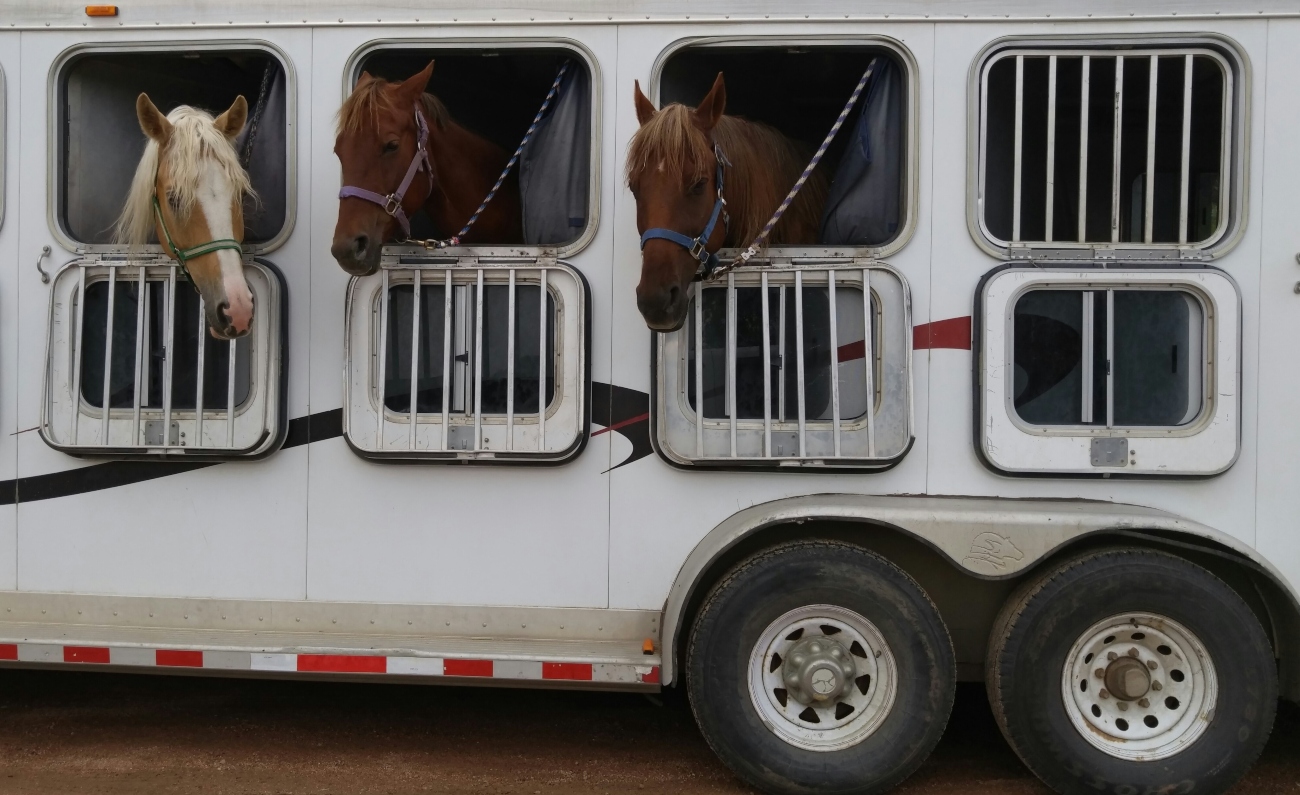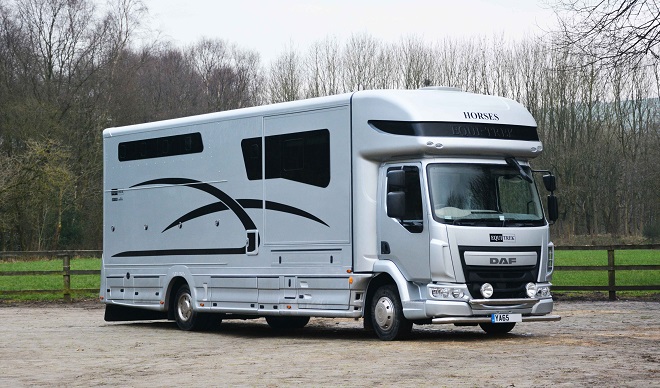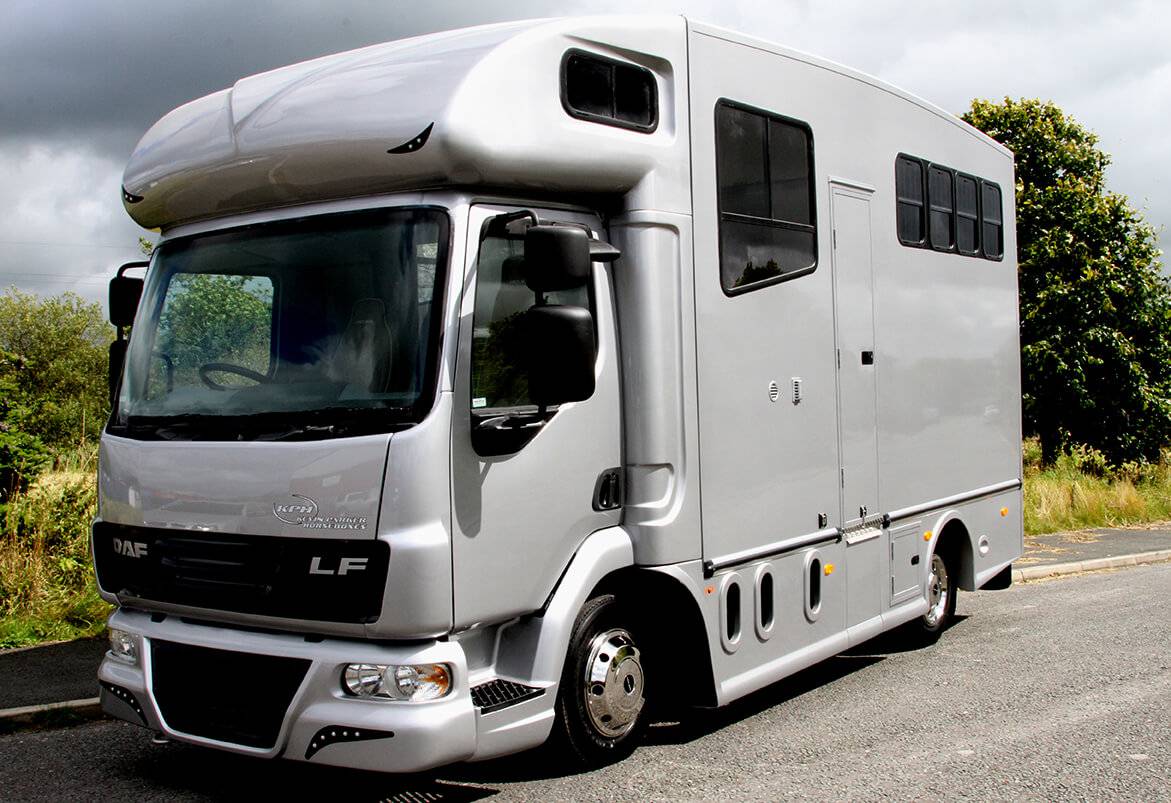Unless you’re out eventing or transporting horses every weekend, there’s a good chance that your horsebox isn’t being used all that often. In theory, this should mean that it lasts you for many years – but if you want your horsebox to stand the test of time, you’ve got to maintain it in the right way.
As much as anything else, it’s a matter of safety. Every vehicle needs to be given the once over every once in a while to ensure it is road worthy and not going to break down – but a horsebox, with its precious cargo, needs special attention.
While horsebox insurance can protect you against anything unexpected like accidents or theft, it’s your responsibility to ensure that your vehicle is safe to be on the road.
In this article, we’ll detail a thorough rundown of essential horsebox maintenance so you have something to follow – starting with the only contact patch between you and the road…

Check your tyres
British motorists are notoriously bad at checking their tyres on a regular basis. Just one in six drivers remembers to check their tyre pressure before setting off on a long journey, according to research commissioned by Highways England.
But by driving on tyres that are incorrectly inflated or in a poor condition, you are more likely to experience a breakdown or a collision. That’s not something you want to comprehend in a horsebox for obvious reasons, so make sure you don’t drive off without showing your tyres some attention.
After a few weeks or months off the road, tyres will inevitably lose air pressure and need re-inflating. Driving on underinflated tyres can make it harder to make it more difficult to control your vehicle – while the risk of a blow out or even a serious accident is increased.
Consult your horsebox’s handbook – or a placard mounted on the vehicle – for the correct tyre pressures. Horsebox tyres typically need inflating to a higher pressure than other vehicles. If you can’t find any documentation to guide you on tyre pressures, TyreSafe advises to increase the vehicle’s rear tyre pressures by 4 to 6 psi (0.3 to 0.4 bar) to improve the stability of the unit.
By keeping your tyres suitably inflated for every journey you undertake, you’re prolonging the life of the rubber. Both under- and over-inflation of tyres accelerates wear – while your horsebox will also consume more fuel.
The other big thing to check with tyres is tread depth. Now, tread depth regulations vary depending on the size of your horsebox, as TyreSafe explains:
“For vehicles, including trailers, up to 3500Kg GVW, the minimum legal tread depth in the UK is 1.6mm throughout a continuous band comprising the central three quarters of the breadth of tread and around the entire outer circumference of the tyre. For horseboxes and other vehicles above this weight limit, the minimum tread depth is 1mm of tread in a continuous band throughout the central three-quarters of the tread, around its entire circumference.”
The last thing to check is the overall condition of the tyres, looking for signs of deterioration such as sidewall cracking and carcass deformation. If your horsebox sits stationary for long periods of time in the yard, don’t be surprised if you notice the tyres ageing more quickly. In order to extend their lifespan, you should try to shield the tyres from direct sunlight and, if possible, jack the weight off your tyres.
Meanwhile, Horse and Hound recommends moving your horsebox forwards or backwards 12 inches if it is parked up for a period of time, which will help guard against the tyres deforming or cracking.
If you want to be certain that your horsebox’s tyres are safe for the road, get a mobile tyre professional to come and check them out.
Keep your batteries charged
If your horsebox’s battery hasn’t got enough charge, you’re not going to make it very far! If you have a horsebox with a living area, you will have two batteries that you’ll need to check are suitably charged. You don’t want to park up for the night only to find out that there’s nothing to power your electrical devices – the idea of having to survive without a cup of tea is not worth thinking about!
Unfortunately, if your horsebox has been parked up for the winter and paid little attention, there’s a decent chance that your starter and leisure batteries will both be flat and potentially need replacing.
As a preventative measure, you can isolate or disconnect your lorry batteries which will stop them going flat. Alternatively, turn the ignition on your horsebox at least once a month – but don’t touch the accelerator for a few moments. Give the oil ample opportunity to run around the engine first, and then increase the revs. In some older vehicles, the batteries won’t start charging until it’s been given a good rev. Let your horsebox run for around half an hour.
Clean out the water system
If your horsebox boasts decent living quarters, it will have fresh and waste water tanks. Again, if the vehicle has been sitting dormant for a period of time, these are going to need some treatment.
Even if you had the presence of mind to clean the tanks thoroughly prior to parking up, you’ll still need to give the system a good clear out before you can think about using it. The tanks might be harbouring all kinds of unpleasant bacteria or algae. The tanks, as well as toilet/washing facilities, will need to be sterilised and flushed through. Here’s how to do it:
- Close all drains and install drain plugs.
- For every 50 litres your fresh water tank holds, measure out 50ml of everyday household bleach.
- Pour the bleach into a 5-litre container and top it up with water.
- Give the container a mix before adding the solution into the fresh water tank.
- Fill the fresh water tank entirely with water.
- Turn on the water pump and open all taps.
- Run the water until the smell of the bleach is present at which point turn off the taps.
- Let the solution sit doing its work for up to half a day in the water tank and water system.
- After 12 hours, drain all of the water from the system thoroughly.
- Refill the fresh water tank with water.
- Flush the system through by turning on the water pump and opening all taps.
- Let the water run until you can no longer smell the bleach.
- You now have a fresh and safe water system!

Check under the bonnet
For the majority of motorists, what goes on under the bonnet of their vehicle is something of a mystery! But it’s important that you know the basics. While a regular MOT and service will go a good way to ensuring that everything is topped up and in good working order, it certainly wouldn’t go amiss to carry out your own checks throughout the year, especially before a long journey.
First things first, make sure all your fluid levels are topped up – so that’s your horsebox’s power steering, transmission, engine oil, brakes, engine coolant and windscreen washer fluid. If anything is running a bit low, top them up accordingly.
If you’re a bit of a dab hand with mechanics – or you’re willing to learn at least – you might want to attempt to change the engine and fuel filters which will regularly need to be replaced, especially if your vehicle has put in the miles or has been parked up for a period of time.
When you’re confident that everything is as it should be, turn the ignition and check your control panel for any warnings (fingers crossed nothing shows up!). While you’re sitting in the driver’s seat, check that all your lights and windscreen wipers are working. Rectify any issues before you drive your horsebox.
Obviously, there’s no way of telling that everything is as it should be just by looking at the different elements – even mechanics can’t always tell when a component is on the way out. That’s why it’s so important to have comprehensive horsebox insurance to cover you in the event of anything going wrong when out on the road. Horsebox insurance usually comes with breakdown cover which can prevent lengthy delays on potentially dangerous roads - something you’ll want to avoid, especially when you have your horse on board.
Check the ramp and the flooring
There are some, frankly, unrepeatable stories to be found about horse’s putting their limbs through the floor of their horsebox with tragic consequences.
To avoid your own disaster, you should regularly check your horsebox’s flooring for signs of damage. The rubber mat that sits on top of the flooring can trick you into thinking it’s all fine down there – the only way of telling if there’s any rot to the plywood is to go looking for it.
Rot makes a plywood floor become weak and flimsy, and letting a horse stand on it could end in tragedy if not remedied prior to a journey. Dampness, droppings and other wear and tear can all cause plywood flooring to lose its integrity.
Manufacturers are now fitting aluminium floors in horseboxes and trailers to make things more stable. If you’ve got an older vehicle, you might want to place an aluminium flooring over the existing floor to improve safety. If you’re not confident about making the alterations yourself, it should be a fairly cheap job (considering the potential consequences of not having it done) for a local horsebox/trailer dealership or manufacturer.
It's not just the flooring which can become loose and unstable over time – so can the ramp, used for loading and unloading your horse. If a ramp was to give way at any point as your horse puts its weight on a weak area, you could have a very large vet’s bill on your hands. So, you need to make repairs at the point you can see visible damage.
Pack the essentials
Whilst it’s impossible to foresee everything that can happen when transporting equines, it is possible to be appropriately prepared for the unexpected.
Every horsebox should have these essentials stowed away before you set off.
- First aid kit. It goes without saying that hopefully you will never have to crack open your first aid kit – but when you’re dealing with horses (and other drivers), you never quite know what’s around the corner.
- Water buckets. For washing off your horse to be able to offer them a drink.
- Rugs. Take a few different rugs with you – there’s no way of telling what the British weather is going to do sometimes!
- Spares. Obviously, you haven’t got space for a spare of everything – but it’s always a good idea to take a spare head collar and lead rope.
- Passport. If you’re heading abroad somewhere, don’t forget to pack passports for you and your equine.
- Emergency contact numbers. As well as storing emergency contact numbers in your phone, write them down on a piece of paper and store them in the glove box, just in case your device runs out of battery at the wrong time.
- Tools for cleaning your lorry. Most showgrounds are insistent that owners pick up any droppings – so a tub rug and poop scooper need to be included.
- Horse grooming kit. As a bare minimum, you should pack a hoof pick and a couple of brushes.
- Driving licence and some cash. Even in today’s largely cashless society, you never know when you might need some cash!

Give your horsebox a clean
Finally, before you head off, give your horsebox or trailer a good clean, both inside and out. As well as helping to prolong the life of your vehicle, it will highlight any safety issues that need remedying.
For a step-by-step guide on how to clean your horsebox, check out this Equesure article.
Protect yourself with horsebox insurance
Unfortunately, no amount of horsebox maintenance can protect you from all the hazards on (and off) the road. Horsebox insurance is an essential purchase, giving you a host of benefits including:
- Limited mileage discounts
- Windscreen cover on comprehensive policies
- Personal accident cover on comprehensive policies
- Values up to £750,000
- Legal cover available with all policies
- EU cover included on all policies
- Breakdown cover including vehicle and horse recovery
For horsebox insurance that suits your needs and budget, call Equesure today.






